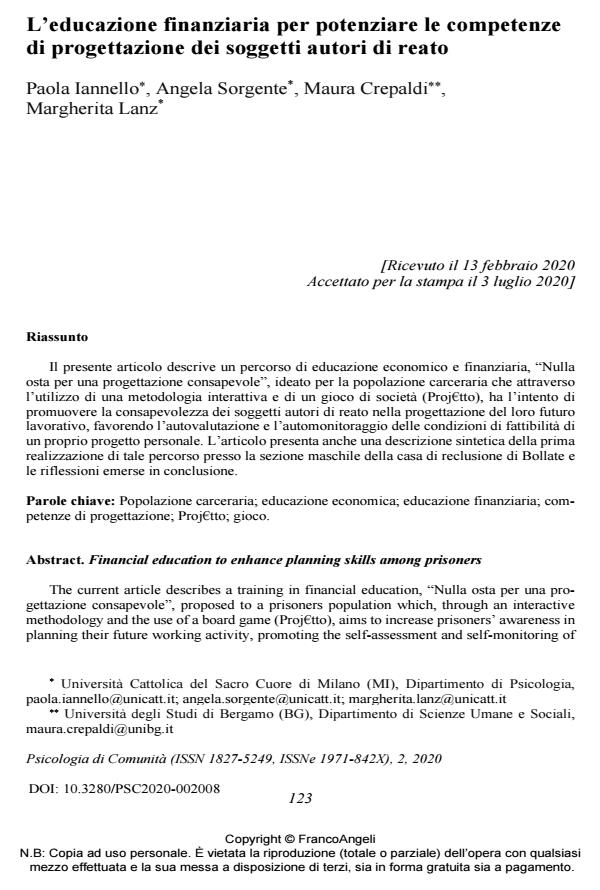Financial education to enhance planning skills among prisoners
Journal title PSICOLOGIA DI COMUNITA’
Author/s Paola Iannello, Angela Sorgente, Maura Crepaldi, Margherita Lanz
Publishing Year 2020 Issue 2020/2
Language Italian Pages 21 P. 123-143 File size 591 KB
DOI 10.3280/PSC2020-002008
DOI is like a bar code for intellectual property: to have more infomation
click here
Below, you can see the article first page
If you want to buy this article in PDF format, you can do it, following the instructions to buy download credits

FrancoAngeli is member of Publishers International Linking Association, Inc (PILA), a not-for-profit association which run the CrossRef service enabling links to and from online scholarly content.
The current article describes a training in financial education, "Nulla osta per una progetta-zione consapevole", proposed to a prisoners population which, through an interactive method-ology and the use of a board game (Proj€tto), aims to increase prisoners’ awareness in plan-ning their future working activity, promoting the self-assessment and self-monitoring of the feasibility conditions of their own future project. The article also presents a synthetic descrip-tion of the first edition of this training in the male section of Prison of Bollate (Milan) and re-flections emerged from it.
Keywords: Prisoners; economic education; financial education; planning skills; Projetto; game.
- L'educazione finanziaria per potenziare le competenze di progettazione dei soggetti autori di reato Paola Iannello, Angela Sorgente, Maura Crepaldi, Margherita Lanz, in PSICOLOGIA DI COMUNITA' 2/2020 pp.123
DOI: 10.3280/PSC2020-002008
Paola Iannello, Angela Sorgente, Maura Crepaldi, Margherita Lanz, L’educazione finanziaria per potenziare le competenze di progettazione dei soggetti autori di reato in "PSICOLOGIA DI COMUNITA’" 2/2020, pp 123-143, DOI: 10.3280/PSC2020-002008